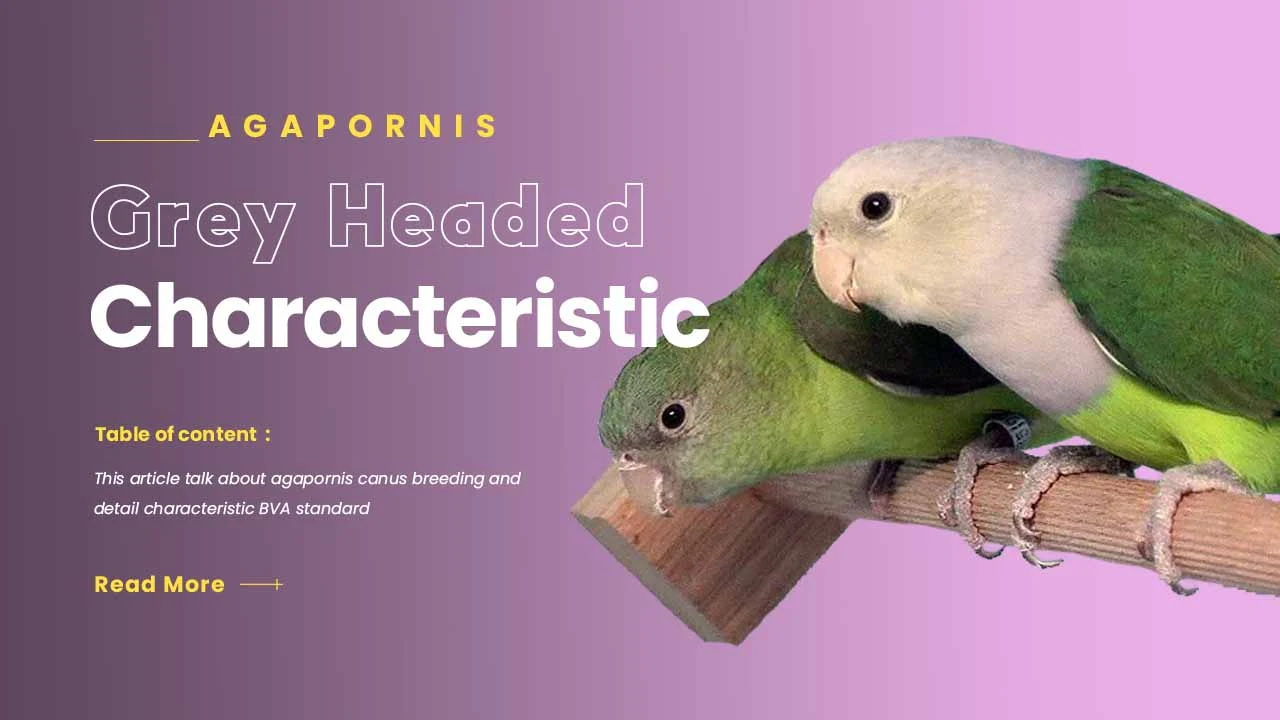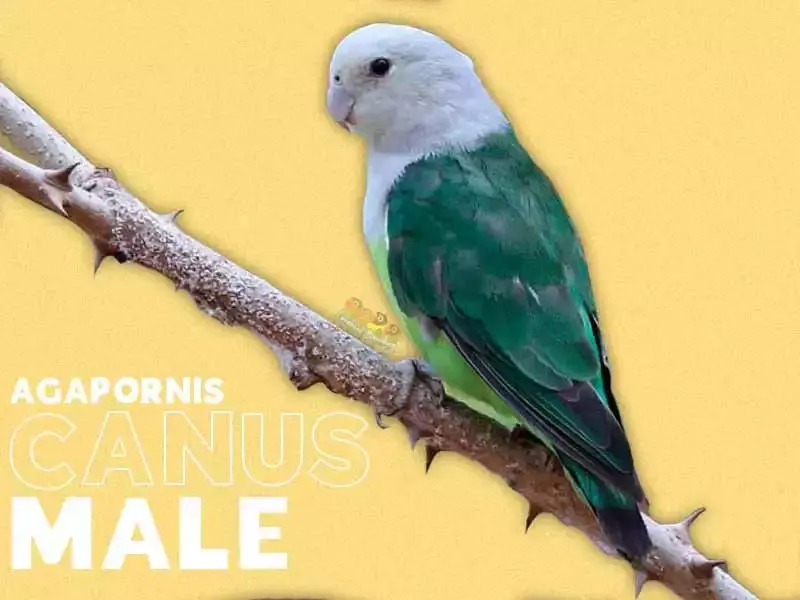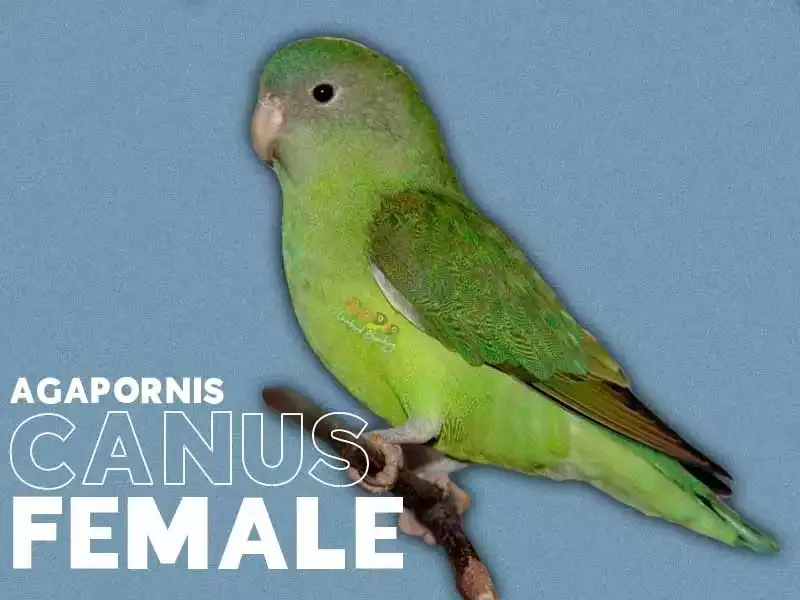
Agapornis canus is found in coastal areas of the island of Madagascar. Therefore, canus also has another name, Madagascar lovebird.
In addition to Agapornis canus, there is also a subspecies called Agapornis canus ablectaneus.
The subspecies are more purple than the nominated form and are mainly found in the southern part of the island.
But in this article, I will only describe Agapornis canus without other subspecies.
Physical Characteristics of Agapornis Canus
Ideal Size: It comes between 13 and 14 cm when you do the measuring test from the top
of the Head to the tip of the tail.
Head The forehead is formed from a lightly rotating beak backwards.
Rear Head The Head (rear) is excellent and fully loaded.
Crown The crown is well-rounded.
Neck The neck section may display a slight recess.
Cheeks Then the cheeks are nice full and in harmony with the Head.
Eyes The eyes are precisely centred and glowing.
Beak The beak is wide at the base, not damaged, and well tucked up; the upper
Mandible should point towards the breast and fit snugly to the lower Mandible.
Lower Mandible: The lower Mandible should be almost invisible.
The breast is
Nicely entire, with elegant rounding and smooth flowing with the curve of the wings.
Abdomen: Follow in harmony with the chest line and do not sag.
Wings Follow well along the body line and upper tail cover. All wing feathers are
intact and do not hang or cross.
Shoulders wide.
Foot Short, sturdy feet with two fingers facing forward and two toes facing back. All
toes are present and are not damaged, and they grip the perch well.
Nails are Evenly curved, all with actual colour, and not damaged. Posture: an
elegant and proud posture that forms good proportions compared to Size.
Plumage Clean, complete, and slightly shiny.
The tail is Wedge-shaped and
slightly rounded at the top.
Rump in a straight line with the tail.
Characteristics of Male Agapornis Canus / Madagascar

Colour name: green (male)
International term: green
Forehead:pearly gray.
Crown:pearl gray.
Cheeks:pearl gray.
Chin:pearly gray.
Throat and upper breast:pearly gray.
Eyes:dark brown with a lighter iris.
Upper mandible:horn color.
Lower mandible:gray.
Lower breast, sides, abdomen, and cloacal area:green.
Coat:darker color than the rest of the body.
Primary:dark gray with green outer propellers.
Rump:slightly darker than the body.
Under the tail cover:green.
Top tail cover:same as rump.
Tail feathers:at the base of the light yellow-green, turns into a black cross band. The tail points are green. The two middle tail feathers are green with a black cross band with a green tip at the end.
Legs:light gray.
Nails:dark gray.
Observations: With the subspecies Agapornis canus abjectness, the pearl grey colour has a purple dye, and the body colour has a bluish haze. Still, continue to search for the remaining clear grey foundation. We can only talk about the purple light on the mask. In this way, we avoid it by selection. The mask becomes deep purple.
Characteristics of Female Agapornis Canus / Madagascar

Colour name: green (female)
International term: green
Forehead:green with a light gray mist.
Crown:green with a light gray haze.
Cheeks:green with a light gray haze.
Chin:green with a light gray mist.
Throat and upper breast:green.
Eyes:dark brown with a lighter iris ring.
Upper mandible:horn color.
Lower mandible:gray.
Lower breast, sides, abdomen, and cloacal area: green. Coat:darker color than the rest of the body.Primary:dark gray with green outer propellers.
Rump:slightly darker than the body.
Under the tail cover:green.
Top tail cover:same as rump.
Tail feathers:at the base of the light yellow-green, turns into a black cross band. The tail points are green. The two middle tail feathers are green with a black cross band with a green tip at the end.
Legs:light gray.
Nails:dark gray.
Observations: With the subspecies Agapornis canus ablectaneus, complete feathers have unmistakable plumage with a bluish mist.
